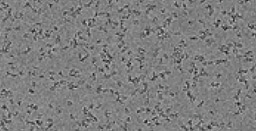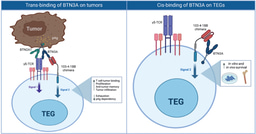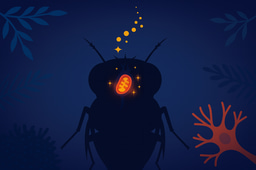World AIDS Day 2024-- From "Ignorans" to "Sciens"
Published in Social Sciences

On Call is the title chosen by Dr. Anthony Fauci for his memoir. It focuses on his skills as a clinician and laboratory scientist at the National Institutes of Health and his expertise in understanding the human immune system and how it functions. An article about an outbreak of a highly unusual disease in previously healthy homosexual men in Los Angeles published in CDC’s Morbidity and Mortality Weekly Report (June 5, 1981) caught his interest and soon thereafter he was caring for very sick patients with what would become known as “Acquired Immune Deficiency Syndrome.“ Against the advice of his closest colleagues, Dr. Fauci decided to recruit a team to investigate the cause of AIDS and to find safe and effective therapeutics. Using his position at the National Institute of Allergy and Infectious Diseases, Tony was able to take advantage of his relationship with Vice President and later President George H. W. Bush as well as his friendship with Surgeon General C. Everett (“Chic”) Koop. His memoir also documents how he came to appreciate ACT-UP activists and their role in expediting the discovery and availability of drugs to treat HIV disease. When confronted with challenges in the biomedical world, Tony’s advice has been “Follow the Science .” Dr. Fauci’s autobiography is a lovely complement to AIDS at 30 : A History (Potomac, 2012) by Victoria A. Harden. We can celebrate advances in understanding, diagnosis, and treatment today, because scientists at NIH and elsewhere were able to collaborate and conduct difficult and often costly studies (In Their Own Words: NIH Researchers Recall The Early Years of AIDS (Available at: https://history.nih.gov/display/history/Transcripts). Another book that became available is Dispatches from the AIDS Pandemic: A Public Health Story ( Oxford University Press, 2023) by Drs. Kevin De Cock, Harold Jaffe, and James Curran.
The three authors are medical epidemiologists who worked on AIDS at the Centers for Disease Control and Prevention in various capacities at various times. Dr. Curran created and coordinated activities of the Task Force on Kaposi’s Sarcoma and Opportunistic Infections. Dr. Jaffe conducted and supervised epidemiologic studies from the outset. Dr. De Cock joined later with a focus on the suffering and spread of HIV in Africa. Their book draws from personal experiences and the oral histories and documents collected for “CDC’s Early Response to AIDS, a Global Health Chronicles Project.” It highlights some of the achievements of CDC staff, and should be read with other accounts, including And The Band Played On: People, Politics, and the AIDS Epidemic (St. Martin’s Press, 1987) by Randy Shilts, Victory Deferred: How AIDS Changed Gay Life in America (University of Chicago Press, 1999) by John Manuel Andriote, Adventures of a Female Medical Detective in Pursuit of Smallpox and AIDS (Johns Hopkins Press, 2016) by Mary Guinan, and The Prevention of Acquired Immunodeficiency Syndrome in the United States: An Objective Strategy for Medicine, Public Health, Business, and the Community (JAMA 1987; 257[10]:1357-66) by Don Francis and Jim Chin. No book or article can tell the whole story, different people in different capacities witnessed the horrors of AIDS differently. That is why I decided to compose my commentary “The City Clinic Cohort Study” [Fig. 1] as a Research Sociologist and member of CDC’s KSOI Task Force during the early years of AIDS. I was happy to contribute to the learning process, but thought that more needed to be said about some of the litter and potholes encountered as I travelled along the path of discovery. Many of us had to make sacrifices and endure unpleasant reactions to our hard work “for the good of the team.” To learn more about how CDC responded to the AIDS pandemic, access the interviews and materials posted at https://globalhealthchronicles.org/aids.
A more complete appreciation of how the medical community was confronted with early AIDS can be obtained by reading AIDS Doctors: Voices of the Epidemic by Ronald Bayer and Gerald M. Oppenheimer(Oxford University Press,2000). The AIDS Epidemic in San Francisco, An Oral History Project (https://www.lib.berkeley.edu/visit/bancroft/oral-history-center/projects/aids) provides additional insight into how decisions were made on biomedical, social, public health, and political issues in one city. When We Rise (Hatchette, 2017) by Cleve Jones offers a personal account of LGBTQ Activism and AIDS in the Bay Area. The book and documentary film How to Survive a Plague: How Citizens and Science Tamed AIDS (Picador, 2017) by David France and colleagues tells the story of ACT-Up in the City of New York. Never Silent: ACT UP and My Life in Activism, by Peter Staley (Porchlight, 2023) offers a personal view of this era of anger and frustration. Behind my paper [https://pubmed.ncbi.nlm.nih.gov/38236319/] are all the emotions I felt as I met with AIDS patients and listened to their stories. Attention on World AIDS Day 2024 is being given to the progress that has been made in understanding and coping with HIV disease. For example South Florida PBS is working on a one hour program that will explore the course of the AIDS epidemic from the beginning to today told by researchers, physicians, patients and activists who remain committed to "Getting to Zero" preventable deaths.
Follow the Topic
-
AIDS and Behavior

This journal provides an international venue for the scientific exchange of research and scholarly work on the contributing factors, prevention, consequences, social impact, and response to HIV/AIDS.






Please sign in or register for FREE
If you are a registered user on Research Communities by Springer Nature, please sign in